► BMW’s new MPV driven
► Big snout and big tech
► But is it any good?
Despite BMW rebranding the 2-series Active Tourer as a crossover, it is resolutely not one. There’s not even a whiff of ‘faux x faux’ about it.
It is an MPV. Strangely though, everyone at BMW tiptoes around this initialism. In 2022 car companies almost seemed embarrassed to be making something that isn’t an SUV.
It certainly looks like an MPV…
Because it is! And it’s all the better for it. But judging by the internet commenters, I’m not the only person who’s not entirely blown away by how it looks.
It manages to be misshapen in a completely different way to its big brother, the iX. Where that has too many angles the Active Tourer has too few. It’s very bulbous and round. Things are improved with large wheels and a metal, rather than blacked out grille but even then, it’s still a bit blobby.
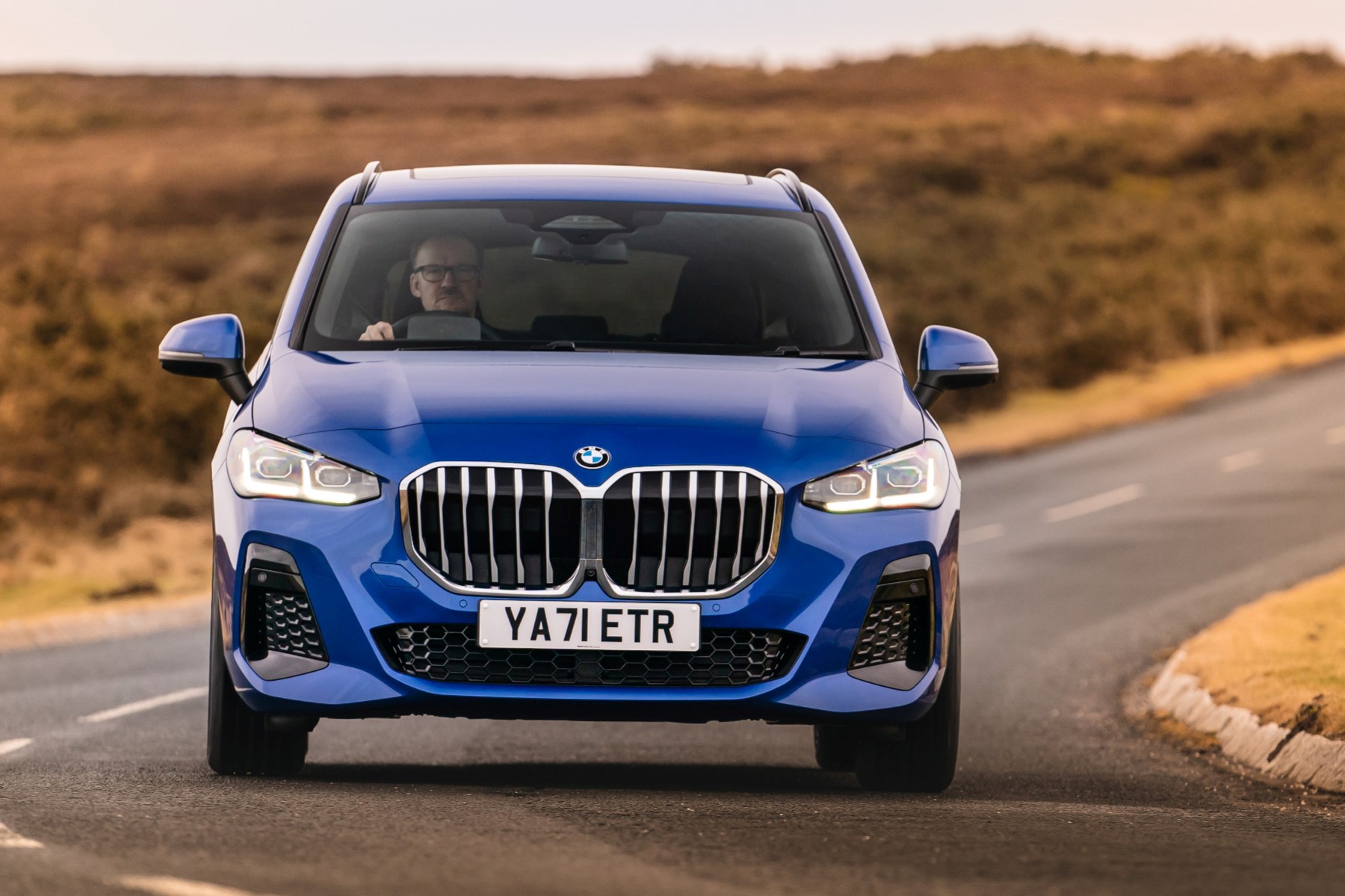
The interior, however, is *insert chef’s kiss emoji*. Up front there’s a 10.25-inch driver display and a 10.7-inch infotainment screen. It’s BMW’s latest setup, nicked straight from the iX. But it lacks the iDrive controller, so you’re just left with just the screen.
It’s up for debate how much you’ll actually miss the iDrive controller here, though – assuming you’ve come from a previous BMW. The screen and this new operating system is easy-to-use and responsive. A home button would be nice, as would separate controls for the heating, but at least the temperature is at the bottom of the screen, so adjusting it only requires a quick swipe and no messing around with menus. If you go mad you can really spec a genuinely luxurious interior with open-pore fine eucalyptus wood and Vernasca leather.
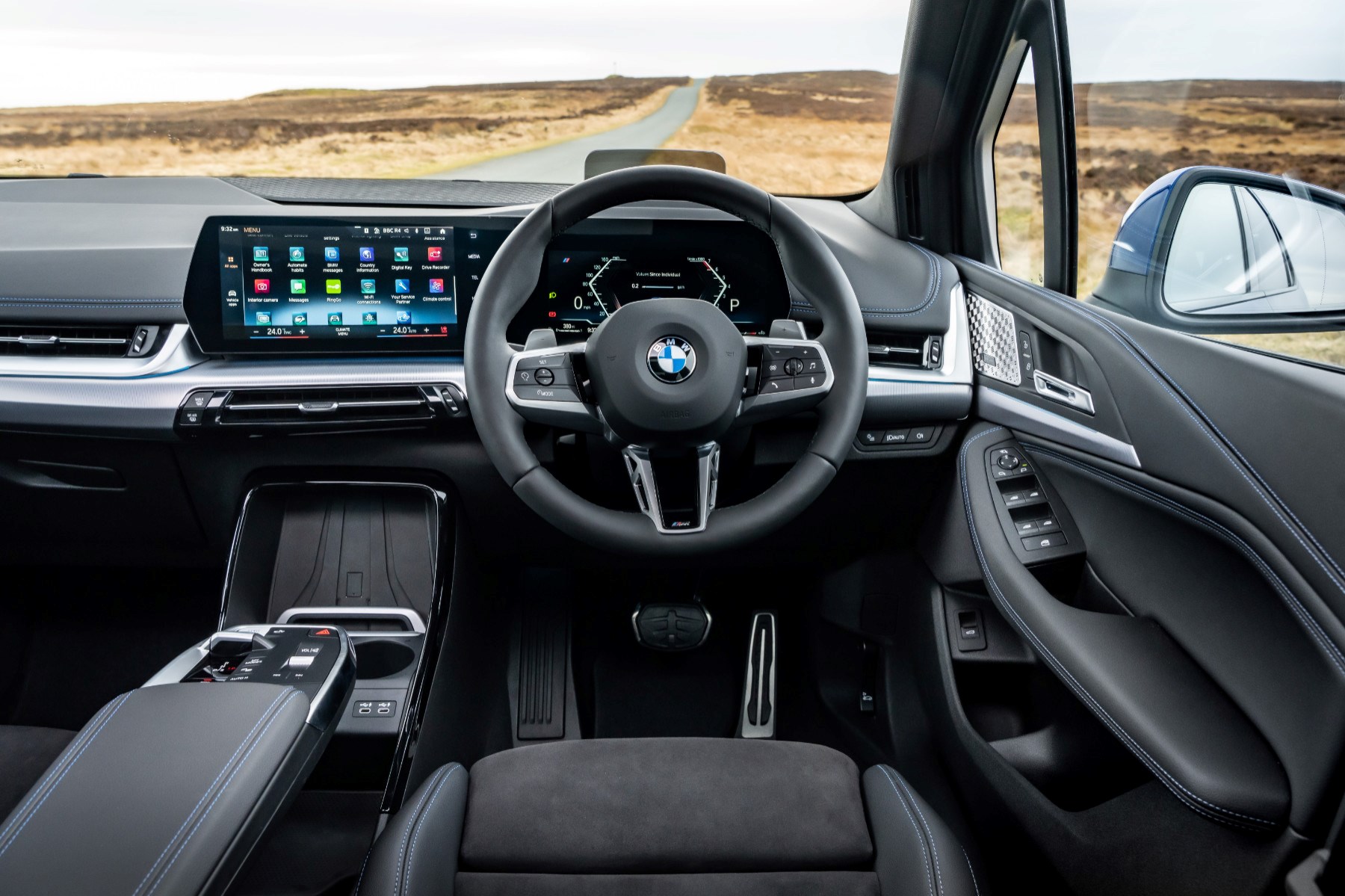
There are three trim levels to pick from. Sport, Luxury and M-Sport. Standard equipment is generous and includes BMW’s latest fancy infotainment, semi-autonomous driving assistance and parking cameras. The wireless phone charger is a new design. You strap your phone in with a large push down bar, a bit like a rollercoaster. Your phone will be secure in it, although I didn’t do a loop-the-loop to test it thoroughly.
As you’d expect practicality is strong. It’s an easy car to get into and see out of. There’s loads of head and knee room in the rear, but no Isofix in the front.
Although the boot space isn’t much larger than a VW Golf or even BMW’s own 1-series, the backrest angle can be adjusted to allow the boot capacity to grow by 90 litres. Boot size is dependent on which engine you go for. The diesel has the largest boot, then the 220i and 223i come next, while predictably the PHEVs have the smallest boots because the additional electrical gubbins live there.
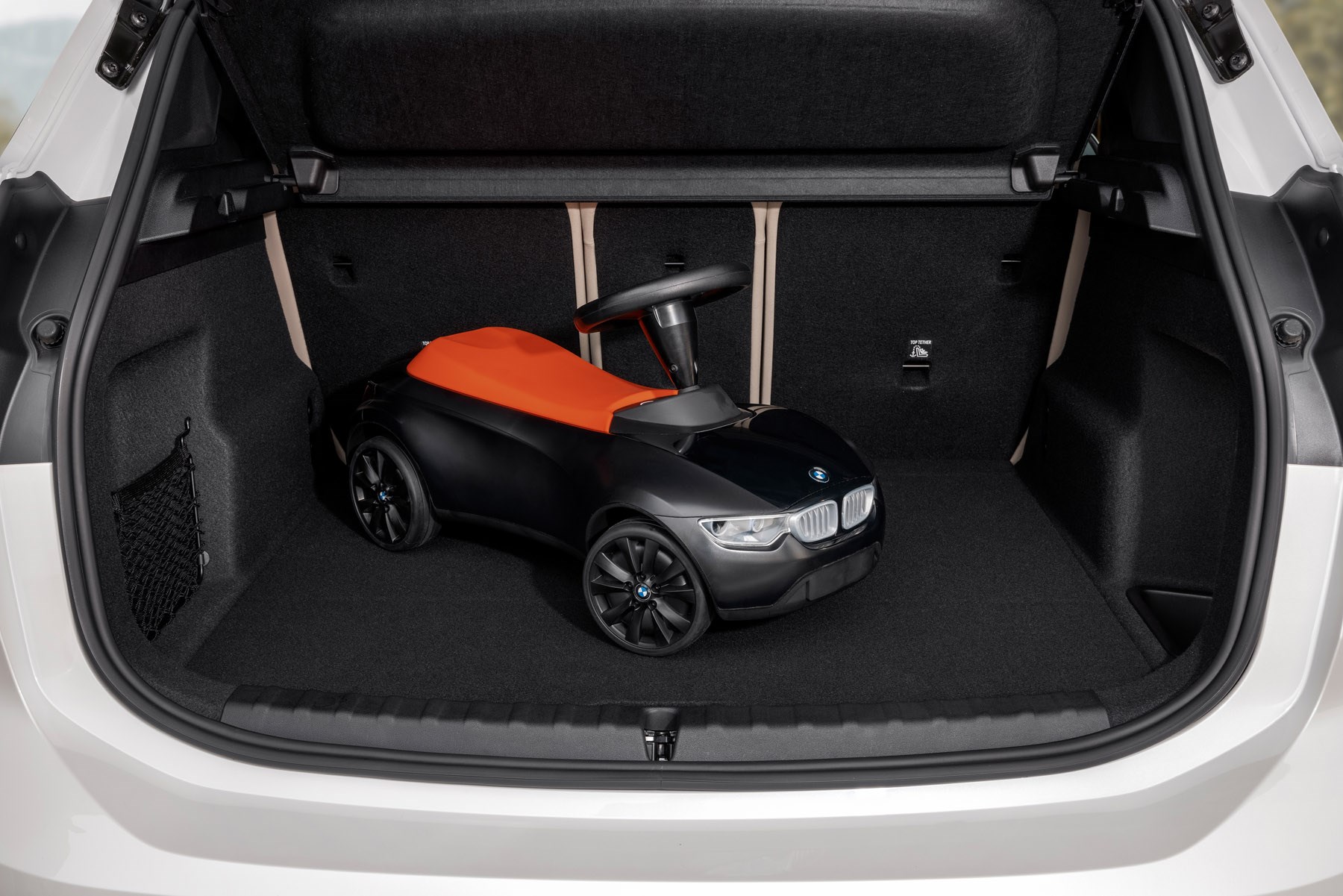
What’s it like to drive?
Bodyroll is kept neatly in check and all the engines are zippy enough. High speed ride is very good. Low speed less so, where pimples in the asphalt are telegraphed through the seats, which can be exacerbated by big (18-inch) wheels on M-Sport models. Wind noise is booming at motorway speeds. You’ll definitely want to opt for the Harman Kardon stereo in order to cancel that out.
Performance fans take note. The 230e xDrive PHEV has around the same power (325hp) and the same 0-62mph time (5.5secs) as an E30 M3. It should charge from 0-100% in about 2 hours 30 minutes from a wallbox and the official range is 49 miles.
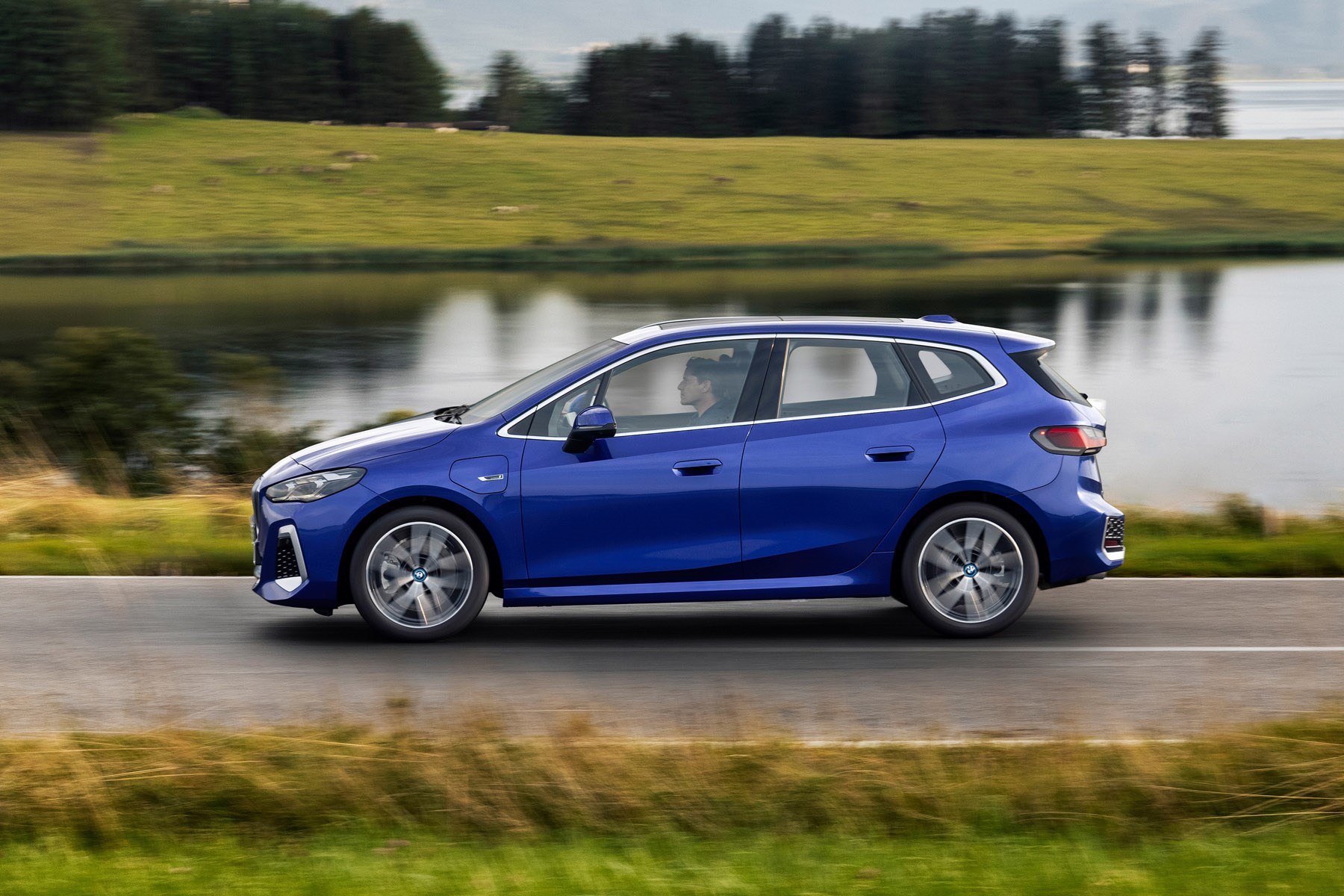
Steering is a little too light to truly make it a driver’s car but it’s still plenty fun. The PHEV is FWD when using petrol, RWD when electric and 4WD when combined. Most of the time it feels completely FWD but it understeers a little less than the permanently FWD cars.
The petrol engines will be the big sellers in the UK. The 220i is a 1.5-litre three-cylinder jobby and the 230i is a 2.0-litre four-cylinder unit. The three-cylinder sounds a little keener and is up to the job of shifting the Active Tourer’s 1.5 tonne frame. It’s around £2,500 cheaper than the 230i and we recommend it for the majority of people.
The 230i is smoother and more muscular. On similar test routes over 85 miles the 220i managed 36mpg while the 230i did around 33mpg. There’s about 47bhp difference (168 and 215 respectively) so that’s probably a fair trade off for the additional cash if you’re more performance minded.
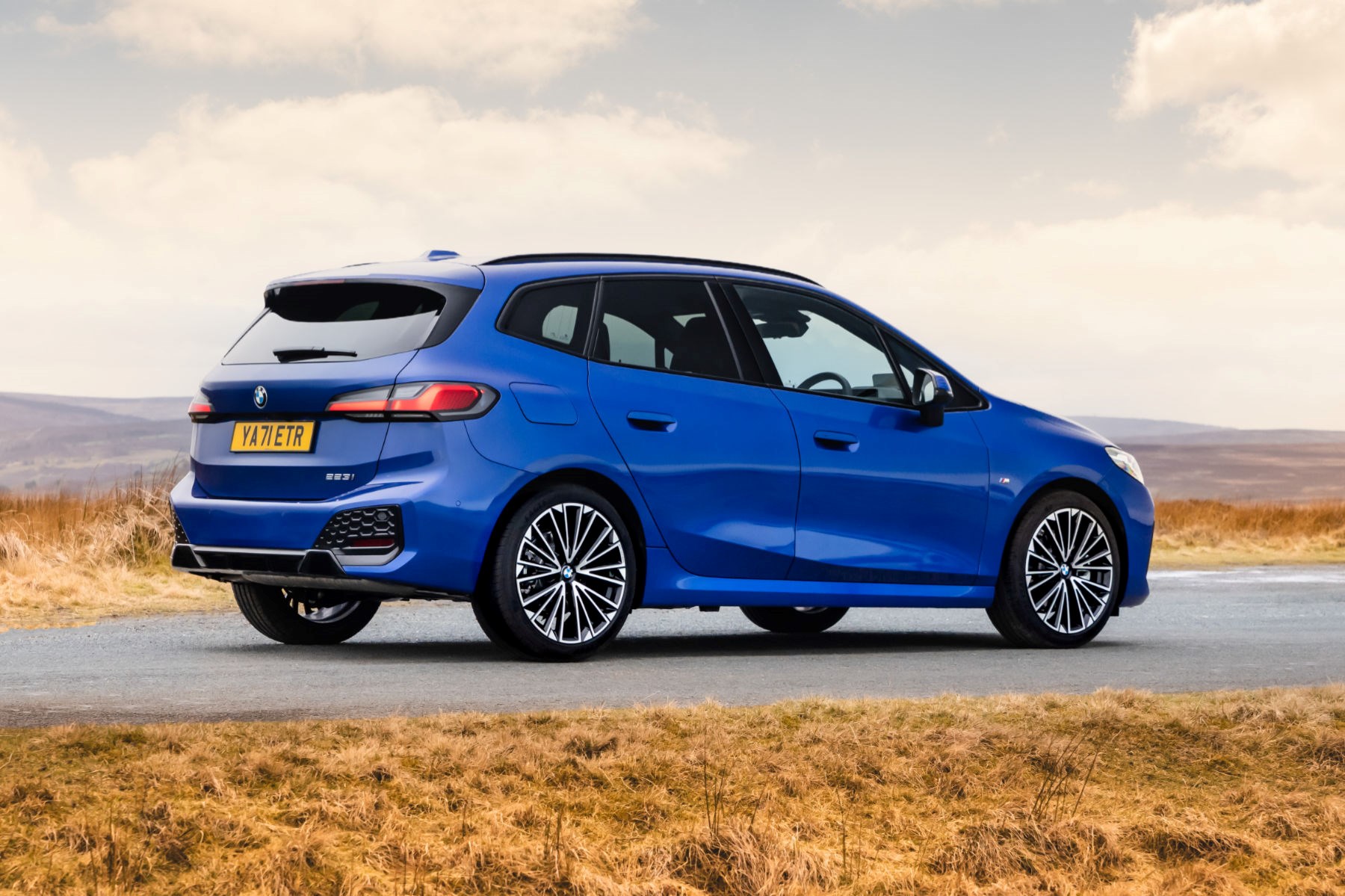
Both are mild hybrids. Improvements to acceleration and mpg are minor but it’s all dealt with minimum fuss. Its predictive regeneration uses the nav and semi-autonomous tech to slow the car down, for instance, when approaching a roundabout in the most efficient way. It’s eerily easy to use.
It’ll also have a diesel on offer badged as the 218d. This is BMW’s 150hp unit with an official mpg rating of 55.4-57.6.
The whole range gets a seven-speed DCT. When left alone shifts are nigh imperceptible. Sticking it into Sport is some kind of madness as it’ll sometimes change down straight past peak torque and into the limiter for no apparent reason.
Throttle modulation is also tricky to gauge in Sport. Pulling out of a T junction can result in an embarrassing chirrup from the tyres if you’re not paying attention, which is hardly the etiquette when exiting a garden centre or cemetary.
BMW 2-series Active Tourer: verdict
There’s something paradoxical about BMW forging ahead with a sensible and old-school body style and stuffing it with the latest spanking new tech and the option of 325hp.
Look past that and you’ll find a tall car that’s easy to get in and out with wide opening rear doors and good all-round visibility. It’s practical, then. A quality most people would surely appreciate. PHEVs should also come in at below 50g/km, which is useful for company car drivers.
It’s not as good on the motorway as it’s biggest rival, the Mercedes A-Class, but the interior is more ergonomic and it’s a better drive too.
If you want something posh and practical and you’re not repulsed by the combination of M, P and V then it’s a real winner.